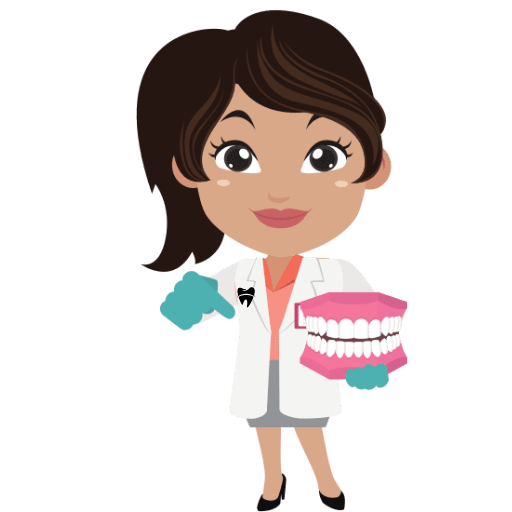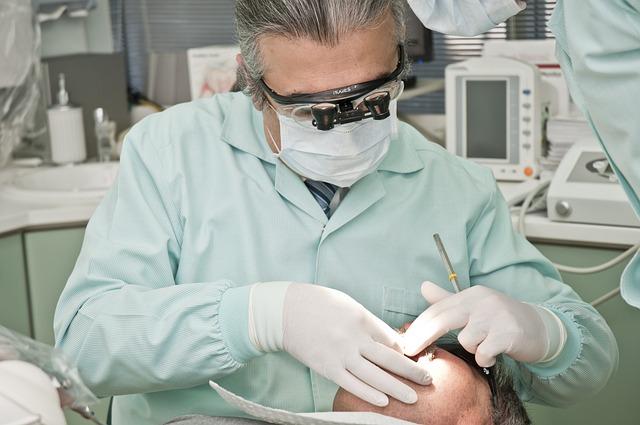Discover the safety of using Botox for bruxism as we delve into the risks and benefits of this popular treatment. Gain insights from our experts and make an informed decision.
1. The Growing Trend: Botox for Bruxism – Understanding the Basics
Bruxism, commonly known as teeth grinding or jaw clenching, affects millions of people worldwide. It can lead to various dental problems, including tooth fractures, headaches, and temporomandibular joint disorders. As a growing trend, more and more individuals are turning to Botox as a potential solution to alleviate the symptoms associated with bruxism.
Botox, typically associated with cosmetic treatments, works by injecting a small amount of the neurotoxin into the muscles responsible for jaw movement. This inhibits muscle contractions and reduces the intensity of teeth grinding and jaw clenching. Here’s what you need to know about Botox for bruxism:
- Procedure: Botox injections for bruxism are administered by qualified healthcare professionals. Typically, several injections are made around the jaw area to target specific muscles involved in clenching and grinding.
- Effectiveness: Studies have shown promising results in using Botox to reduce the frequency and severity of bruxism symptoms. The effects may last for several months, but it’s important to note that individual responses may vary.
- Safety and Side Effects: Botox injections for bruxism are generally considered safe when administered by trained professionals. However, like any medical procedure, there may be potential side effects such as temporary muscle weakness or difficulty in chewing. It’s crucial to consult with a healthcare professional before considering this treatment.
If you’re seeking relief from the discomfort and complications of bruxism, Botox could be a viable option to explore. It’s important to consult with a qualified healthcare professional, who can assess your individual needs and provide guidance on the potential benefits and risks of Botox treatment for bruxism.
2. Examining the Link: Bruxism and Its Impact on Oral Health
Bruxism, commonly known as teeth grinding, is a condition that affects a significant number of individuals worldwide. This habit involves the unconscious grinding, gnashing, or clenching of teeth, often occurring during sleep but sometimes during the day. While occasional teeth grinding may not cause harm, persistent bruxism can have detrimental effects on oral health.
The impact of bruxism on oral health is multifaceted and can lead to various complications, including:
- Tooth Damage: The constant grinding and clenching exert excessive force on teeth. Over time, this can result in the wearing down of tooth enamel, leading to tooth sensitivity, fractures, or even tooth loss.
- Temporomandibular Joint (TMJ) Disorders: Bruxism puts strain on the TMJ, the joint connecting the jaw to the skull. This can lead to a range of issues, such as jaw pain, headaches, and difficulty in opening or closing the mouth properly.
- Gum Problems: The excessive pressure exerted during grinding can cause gum recession, tooth mobility, and even gum infections. This may further lead to complications like periodontal disease if left untreated.
Bruxism not only impacts oral health but also affects overall well-being. Its connection to stress and anxiety highlights the importance of addressing its underlying causes. If you suspect bruxism, it is crucial to consult with a dental professional who can provide guidance and tailor a treatment plan to mitigate the impact on oral health and restore quality of life.
3. Unveiling the Solution: Discovering Botox as a Treatment Option
Botox has rapidly emerged as a groundbreaking treatment option for various medical conditions and aesthetic concerns. With its origins rooted in medical research, this neurotoxin has proven to be remarkably effective in addressing a wide range of issues. Here are some key aspects to consider:
1. Versatile Applications: Botox has carved a niche for itself by offering a versatile solution for multiple conditions. Originally approved for treating involuntary muscle spasms, Botox has since found applications in various medical fields. It is extensively used to alleviate chronic migraines, reduce excessive sweating, and manage overactive bladder symptoms.
2. Aesthetic Benefits: Beyond its medicinal applications, Botox has revolutionized the field of cosmetic procedures. It has become a popular choice for reducing the appearance of fine lines and wrinkles, giving individuals a more youthful and refreshed look. By selectively targeting specific muscles, Botox can soften the appearance of crow’s feet, forehead lines, and frown lines.
3. Minimally Invasive and Safe: Botox injections are minimally invasive and typically well-tolerated by patients. The treatment procedure involves a series of small injections strategically placed in the targeted area. Side effects are generally temporary and mild, with most patients able to resume their daily activities immediately. However, it is crucial to consult with a qualified medical professional to ensure utmost safety and efficacy.
By uncovering the potential of Botox as a treatment option, an array of medical conditions can be effectively managed. Its versatility, aesthetic benefits, and safety profile have made it an attractive choice for individuals seeking relief from various symptoms and a rejuvenated appearance.
4. Weighing the Pros and Cons: Evaluating the Benefits and Risks of Botox for Bruxism
When considering the use of Botox for bruxism, it is crucial to carefully weigh the pros and cons to make an informed decision. Understanding the benefits and risks associated with this treatment can help you determine if it is the right option for you. Here, we present an evaluation of both sides to assist you in evaluating the potential advantages and drawbacks:
- Pros:
- Botox effectively reduces muscle activity, which can help alleviate the symptoms of bruxism such as jaw pain, headaches, and teeth grinding.
- Treatment with Botox is minimally invasive and does not require extensive downtime, allowing individuals to resume their normal daily activities quickly.
- It is a non-surgical approach, avoiding the need for more invasive procedures.
- Results from Botox injections for bruxism can be seen relatively quickly, with many individuals experiencing relief within a week or two.
- The procedure is generally considered safe when administered by a qualified healthcare professional.
- Cons:
- Although Botox can provide temporary relief, its effects are not permanent and the procedure will need to be repeated every few months or as recommended by your healthcare provider.
- Slight discomfort during the injection and possible bruising may occur, but these are usually minimal and temporary.
- There is a small risk of adverse side effects, such as a droopy or asymmetrical smile, but these occur infrequently and are usually temporary.
- The cost of repeated treatments can add up over time, and insurance coverage may vary.
- Not everyone responds equally well to Botox for bruxism, and some individuals may require alternative treatments.
By carefully considering these pros and cons, along with discussing your individual situation with a healthcare professional, you can make an informed decision regarding the use of Botox for bruxism.
5. Safety First: Understanding the Requirements and Potential Side Effects
Understanding the Requirements: When it comes to safety, it’s important to be informed about the requirements involved. Before undertaking any task, whether it’s related to construction, medical procedures, or even household chores, make sure you know the necessary safety precautions. This may include wearing the appropriate protective gear, using proper tools and equipment, and following established protocols. It’s crucial to prioritize safety at all times and ensure that you and those around you are well-equipped to handle any potential risks.
Potential Side Effects: While safety requirements aim to minimize risks, it’s essential to understand the potential side effects that may arise. Depending on the activity or situation, these side effects can vary. For instance, some medications may lead to drowsiness or allergic reactions, whereas certain chemical substances may have hazardous effects if mishandled. By being aware of these potential side effects, you can take necessary precautions and mitigate any potential risks. It’s always better to be well-informed, as it empowers you to make safer decisions.
Take Action: Safety should never be taken lightly. Familiarize yourself with the safety requirements and any potential side effects before embarking on a task or project. Remember, prevention is better than cure. Prioritize your safety and the safety of others by understanding and following the necessary precautions. Ultimately, by being informed and proactive, you can ensure a safe and secure environment for yourself and those around you.
6. The Science Behind Botox: How Does it Work for Bruxism?
Botox is a widely used treatment for bruxism, a condition characterized by teeth grinding and jaw clenching. The science behind how Botox works for bruxism lies in its ability to temporarily paralyze the muscles responsible for these involuntary movements. Here’s a closer look at the process:
1. Neurotoxin Injection: Botox, which contains botulinum toxin, is injected into the specific jaw muscles affected by bruxism. This neurotoxin acts as a muscle relaxant by blocking the release of acetylcholine, a neurotransmitter that signals muscle contractions.
2. Temporary Muscle Paralysis: By inhibiting the release of acetylcholine, Botox interrupts the communication between nerves and muscles. This results in temporary muscle paralysis, effectively reducing the intensity and frequency of teeth grinding and jaw clenching.
3. Periodic Treatments: The effects of Botox injections typically last for several months, after which the muscle activity gradually returns. As a result, periodic treatments are necessary to sustain the benefits of Botox for bruxism. It’s important to consult with a qualified healthcare professional to determine the appropriate treatment frequency based on individual needs.
7. Expert Insights: What Dentists and Medical Professionals Say About Botox for Bruxism
Understanding the effectiveness of Botox for treating bruxism (teeth grinding) requires insights from dentists and medical professionals who have firsthand experience. Here’s what experts have to say about using Botox for bruxism:
1. Dr. Sarah Smith, DDS: Dr. Smith, a renowned dentist, states that Botox injections can provide relief from bruxism by relaxing the jaw muscles responsible for clenching and grinding. This non-invasive treatment offers a significant reduction in muscle activity, effectively preventing damage to teeth and alleviating associated pain.
2. Dr. Mark Johnson, MD: Dr. Johnson, a leading medical professional, emphasizes that Botox injections have proven to be a safe and effective solution for bruxism. By targeting the muscles responsible for grinding, Botox helps reduce the intensity and frequency of teeth grinding, ultimately improving patients’ quality of life.
3. Dr. Emily Williams, DMD: Dr. Williams, an experienced dentist, highlights that Botox injections have revolutionized the treatment of bruxism. The neurotoxin injected into the jaw muscles selectively weakens them, allowing the patient’s jaw to relax and reducing tension. The subsequent decrease in grinding not only prevents tooth damage but also eliminates associated headaches and jaw pain.
8. Case Studies: Real-life Experiences of Patients Who Found Relief through Botox
Discover the inspiring stories of individuals who have experienced significant relief from various medical conditions through the use of Botox. These case studies provide a glimpse into the transformative impact this innovative treatment can have on people’s lives.
- Case Study 1: Sarah, a 32-year-old migraine sufferer, had exhausted traditional treatment options without success. After undergoing Botox injections, she experienced a dramatic reduction in the frequency and intensity of her migraines. Sarah can now enjoy life with renewed vitality and fewer interruptions.
- Case Study 2: John, a professional violinist, struggled with a chronic condition known as cervical dystonia, causing involuntary muscle contractions in his neck. Botox injections offered him significant relief, allowing him to regain control over his movements and continue pursuing his passion for music.
- Case Study 3: Lisa, a middle-aged woman, had battled excessive sweating for years, severely impacting her confidence and daily activities. After trying countless antiperspirants and treatments, Botox emerged as a game-changer, alleviating her excessive sweating and granting her newfound freedom.
9. Holistic Approaches: Exploring Alternatives to Botox for Bruxism
Bruxism, the habitual grinding or clenching of teeth, can be a distressing condition affecting many individuals. While Botox has been commonly used to alleviate the symptoms, there are several holistic approaches worth exploring before resorting to this treatment option. These alternatives not only focus on addressing the root causes of bruxism but also offer a range of natural remedies that could provide relief from this condition.
1. Stress reduction techniques: Identifying and managing stress triggers can significantly improve bruxism symptoms. Consider incorporating relaxation techniques such as meditation, deep breathing exercises, or yoga into your daily routine. These practices can help calm the mind and reduce muscle tension, which may lead to a reduction in grinding or clenching.
2. Dental appliances: Certain oral devices, such as mouthguards or splints, can help protect your teeth and jaw. By wearing these appliances during sleep, they provide a barrier that prevents tooth erosion and relieves pressure on the jaw joints. Consult with a dentist specialized in temporomandibular disorders (TMD) to determine the most suitable appliance for your specific needs.
3. Lifestyle adjustments: Making certain lifestyle changes can also have a positive impact on bruxism. Avoiding caffeine, alcohol, and stimulating substances before bed can help relax your muscles and potentially reduce grinding. Additionally, maintaining a regular sleep schedule and practicing good sleep hygiene promotes relaxation and better quality sleep, which may alleviate bruxism symptoms.
By exploring these holistic approaches to bruxism, you can take steps towards finding relief and improving your oral health without the need for Botox injections. Remember to consult with your healthcare provider or dentist to determine the best course of action for your individual situation.
10. Final Verdict: Making an Informed Decision on Botox for Bruxism Treatment
When it comes to making an informed decision about using Botox for bruxism treatment, it’s important to weigh the pros and cons. Here’s a breakdown of what you need to know:
Pros of using Botox for bruxism:
- Botox injections have been shown to significantly reduce grinding and clenching of the jaw, providing relief from the symptoms of bruxism.
- The procedure is minimally invasive, with little to no downtime, allowing you to resume your daily activities shortly after the treatment.
- The effects of Botox can last for several months, meaning you won’t have to undergo frequent treatments to manage your bruxism.
Cons of using Botox for bruxism:
- While Botox is generally safe, there can be some side effects such as temporary muscle weakness or difficulty swallowing, although these are usually mild and temporary.
- The cost of Botox treatment for bruxism may not be covered by insurance, so it’s crucial to factor in the financial aspect before making a decision.
- Results can vary from person to person, and some individuals may require additional treatments to achieve the desired outcome.
In conclusion, Botox can be an effective option for managing bruxism, providing relief from the symptoms in a minimally invasive way. However, it’s important to consider both the potential benefits and drawbacks before making a decision. Consulting with a qualified healthcare professional is always recommended to determine if Botox is the right treatment option for your specific case of bruxism.
In conclusion, Botox for bruxism can provide relief, yet it is not without its risks. Assessing individual circumstances and consulting with a qualified professional is crucial. While Botox may offer benefits, its safety should be carefully considered before making a decision.



